
|
Guillaume Delisle |
Globe céleste, calculé pour l'an 1700 sur les observations les plus recente, par G. De l'Isle, géographe, Parigi 1699
|
Guillaume Delisle
Globe céleste, calculé pour l'an 1700 sur les observations les plus recente, par G. De l'Isle, géographe, Parigi 1699

Il globo celeste che presento in questa pagina, inciso da Charles-Louis Simonneau, fu progettato da Guillaume Delisle (1675-1726). Guillaume, figlio di Claude Delisle, fu allievo di Giandomenico Cassini e dopo essere stato studente all’ Académie des sciences dal 1702 ne divenne membro nel 1718. Insegnò la geografia al giovane Louis XV assumendo poi la carica di primo geografo del re.
A cura di BnF

vedi:
Presentazione autore
https://catalogue.bnf.fr/ark:/12148/cb15238363g
Opere dell’autore
https://data.bnf.fr/fr/15238363/guillaume_delisle/
Un esemplare del globo di Delisle in copia con uno terrestre è presente nella raccolta del Museo Galilei di Firenze:

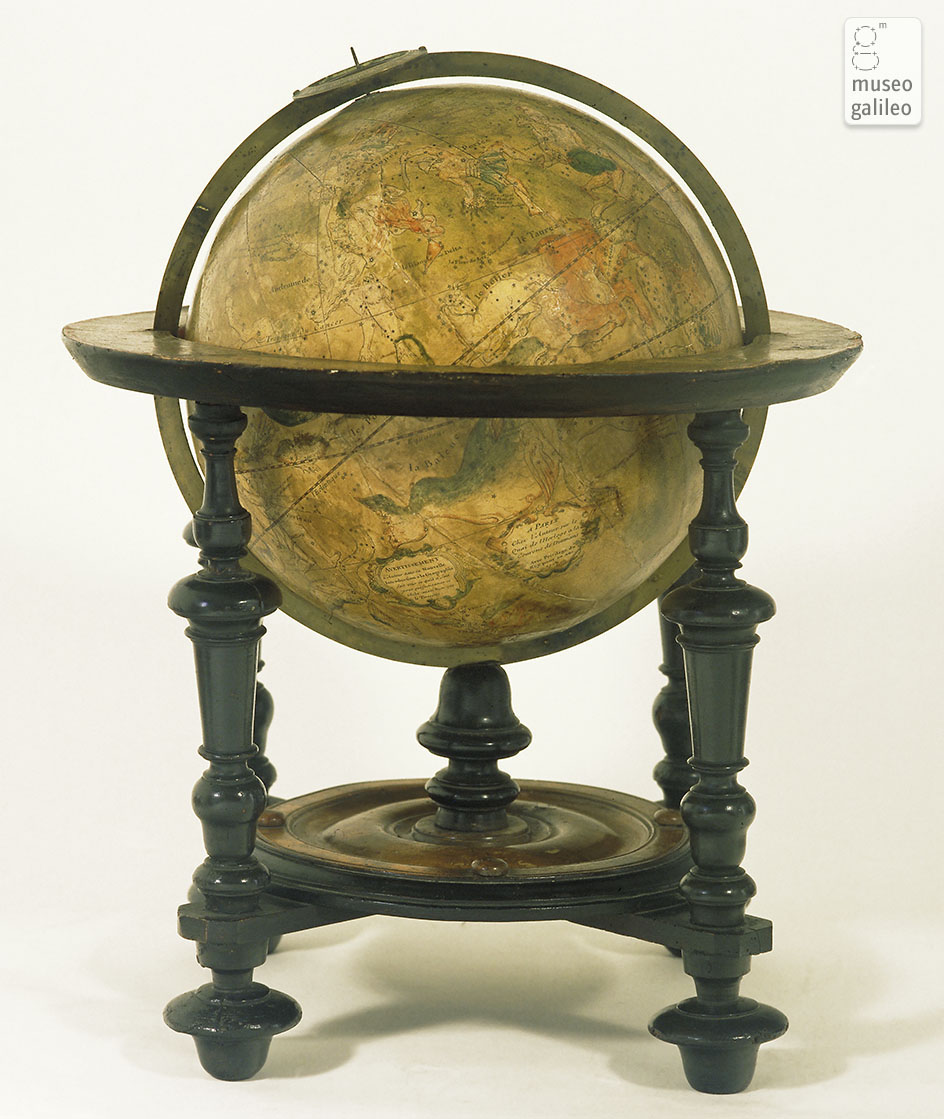
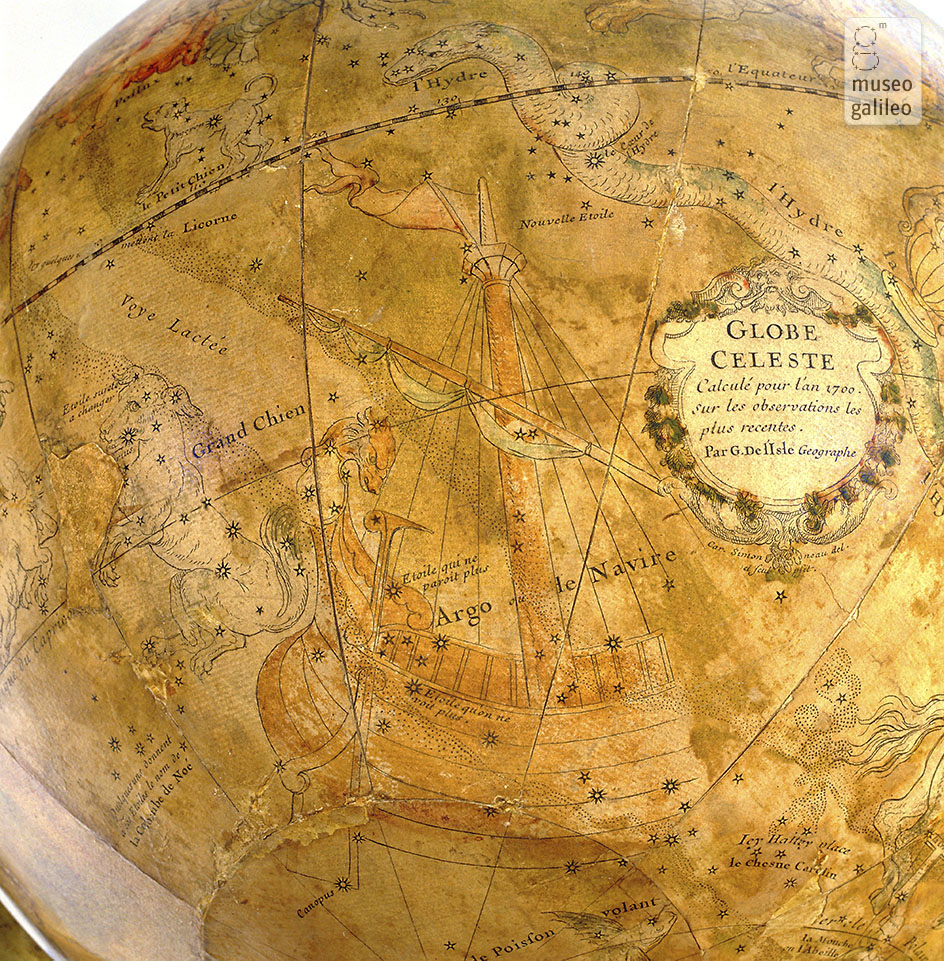
https://catalogo.museogalileo.it/oggetto/GloboCeleste_n10.html

https://catalogo.museogalileo.it/biografia/GuillaumeDelisle.html
Un altro è stato messo all’asta nel 2020 da Paulus Swaen Auction & Gallery:


https://www.swaen.com/12-inch-Delisle-celestial-globe.php#top
che lo presenta con questa scheda:
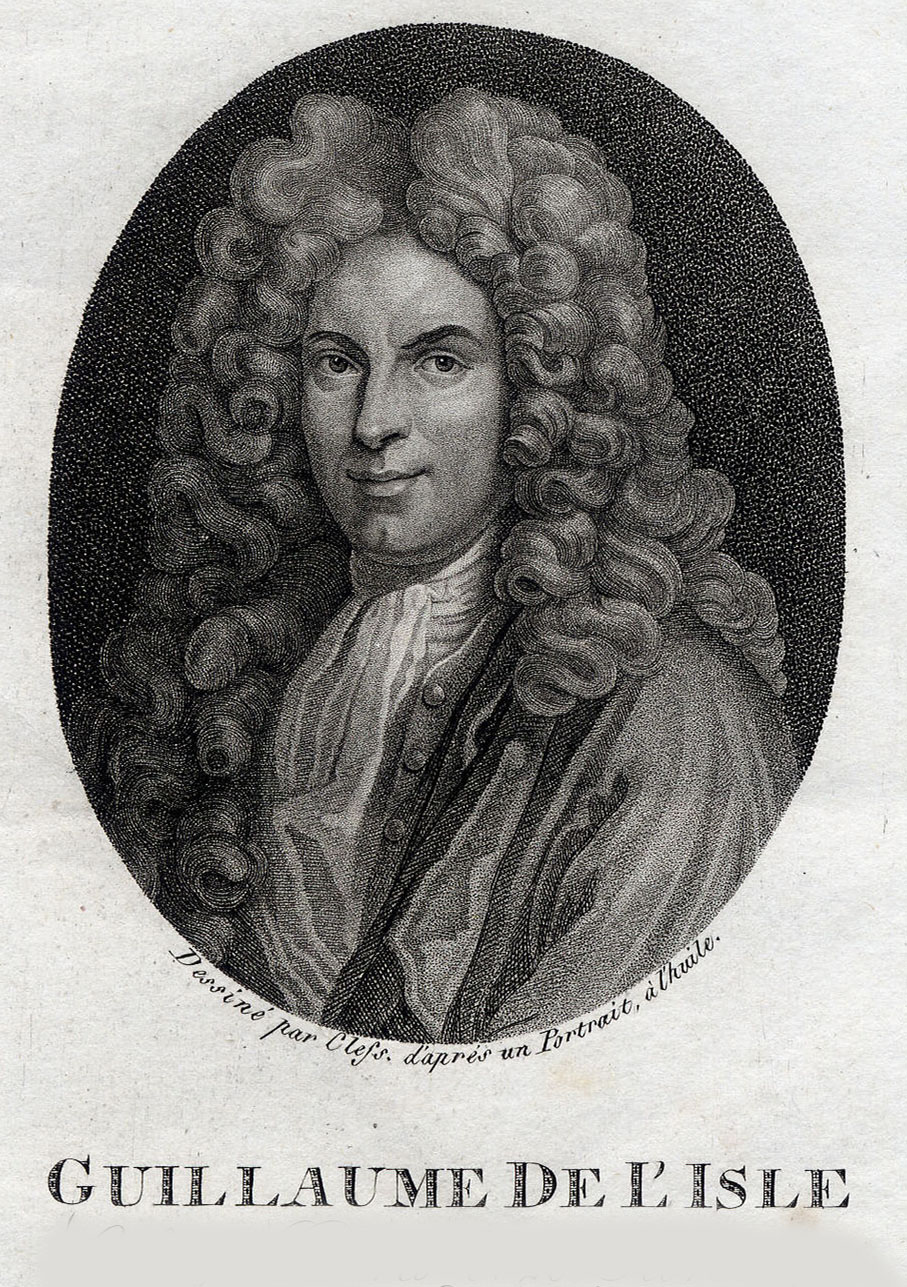
To our knowledge the only known example of this 12
inch (32,5cm.) celestial library globe, published by "one of the foremost
cartographer’s of the age (Shirley), here in its extremely rare first
address "Rue des Canettes" and dated 1700.
Made up of two sets of twelve finely engraved and hand-coloured gores and two
polar calottes (70°) laid to the ecliptic poles of a papier-maché and plaster
sphere, the axis through the celestial poles. Brass meridian circle, graduated
on one face, brass meridian hour circle and pointer.
Decorated with constellation figures, backgrounds in green, constellation
figures hightened in red and pale colours.
The northern and southern constellations comprise some additions to the
Ptolemaic group, while those of the zodiac are the conventional ones. The
engraver is not mentioned, but was most probably Charles Simmoneau, member of
the Académie Royale des Sciences. Also Claude Auguste Berey (fl. 1689-1722) has
worked for De L'Isle.
Title in a cartouche : GLOBE CELESTE Calcule pour l´an 1700 sur les
observations les plus ... P. G. de l´Isle cartographe".
With address "A Paris chez l´auteur rue des Canettes Faubourg St. Germain
prés de St. Sulpice Avec Privilege du Roy pour 20 ans. 1700".
With a dedication "A SON ALTESSE ROYALE MONSEGNIEUR LE DUC DE CHARTRES par
son très humble et très obéissant serviteur De l'Isle."
The title of duc de Chartres was given by Louis XIV of France to his nephew,
Philippe II d'Orléans, at his birth in 1674. Philippe II was the younger son and
heir of the king's brother, Philippe de France, Duke of Orléans.
The horizon ring graduated in individual days of the houses of the Zodiac, with
sigils and labelled every ten days. This paper facsimilé horizon ring is
completely hand drawn in black ink and hand coloured. It could well be that a
printed horizon ring was not yet availablle at that early date.
The globe is mounted on a tall French ebonised oak stand, papered horizon ring supported by four turned legs united by plain stretchers supporting the base plate and central pillars. Height 52 cm. One leg with a repaired crack, but nothing missing. The globe surface with the usual repairs and some minor areas restored or drawn in.
Recorded examples of his celestial globe
Two examples of the 1700 dated celestial globe are recorded in :
- The Museo Galileo in Florence, Italy. (Medici collections, inv
974; donated by Grand Duke Peter Leopold to the Museo di Fisica e
Storia Naturale of Florence at its foundation in 1775.) however bearing the
later address "Quai de l'Horloge".
- A pair sold at Christies, sale 5586, lot
147, 25 June 1997. The catalog description unfortunataly does not
mention the address.
Recorded examples of his terrestrial globe.
A handful 1700 dated terrestrial globes are known but as far as we could
research they all bear the later "Quai de l'Horloge" address.
- National Maritime Museum of Greenwich (GLB0146) bears the address "Quai de l'Horloge".
- Terrestrial printed globe gores in BNF formerly at the Bibliothèque au Service
hydrographique de la Marine, has "Quai de l'Horloge" and shows clearly ereasure
in the address.
- Arader Sale, New York 24 January 2015, lot
119, dated 1700, with "le quai de l'Horloge" address. Previously sold
at Christies 7
December 2009. - Musée national du château de Versailles, France. The catalog
description (Nº
d'inventaire: VMB 14751.1), with "Quai de l'Horloge a la Couronne".
- Stevenson mentions a terrestrial globe dated 1700 in the Real Biblioteca of
Madrid. Publisher's address unknown.
Stevenson does not makes mention of a celestial, nor terrestrial globe with the
"Rue de Canettes" address in his book, Terrestrial
and celestial globes, volume 2.
Guillaume De L'Isle (Paris,
1675 -1726 )
was one of the most important cartographers of the early 18th century in France
and removed the celestial errors that were copied from Ptolemy, and created a
new and accurate celestial globe.
De L'Isle was the son of Marie Malaine and Claude De L'Isle (1644-1720), who
later remarried Charlotte Millet de la Croyère after his first wife died
following childbirth. It is possible that the couple had as many as 12 children,
but many of them died at a young age.
Although Claude De L'Isle had studied law, he also studied geography and history
under Nicolas Sanson. He taught history and geography and had such a good
reputation in Paris’ intellectual circles that he educated lords, among them was
the duke Philippe d’Orléans who later became regent for the crown of France.
Guillaume and his two of half-brothers, Joseph Nicolas and Louis, ended up
pursuing similar careers in science.
While Claude certainly has to be given credit for Guillaume’s education, the
latter showed early signs of being an exceptional talent. He would soon
contribute to the family workshop by drawing maps for his father’s historical
works.
In order to perfect his skills, Guillaume De L'Isle became the student of the
astronomer Jean-Dominique Cassini, who was the director of the Paris Observatory.
Early on he produced high quality maps, the first being a manuscript map "Carte
de la Nouvelle-France et des Pays Voisins" in 1696. As Guillaume was only
twentyone years old in 1696, it is likely that his father, Claude, also a
cartographer, had influence regarding this map.
In the year 1700, when he was but twenty-five years of age, there appeared under
his name a world map and likewise maps of the several continents and he issued
the first edition of his globes, those having a diameter of about 32,5 cm. and
those having a diameter of 15 cm.
These works appears to have established his reputation. In the year 1702 he
became a member of the Académie des Sciences, not as a geographer -this
department was not established until the year 1730- but as an astronomer under
Jean-Dominique Cassini. In fact, he had received a joint training: one type with
his father Claude, the historian/geographer for whom he prepared maps and globes,
and another with Jean-Dominique Cassini, who taught him astronomy.
It was necessarily the latter who persuaded him to use the figures of latitude
and longitude set out by the Académie des Sciences, to compile documents which
would renew French cartography.
When he became a member of the Académie Royale des Scienes, he signed his maps
with the title of "Géographe de l’Académie". Five years later, he moved to the
Quai de l’Horloge in Paris, a true publishing hub where his business prospered.
De L'Isle’s ascension through the ranks culminated in 1718 when he received the
title of "Premier Géographe du Roi".
His new office consisted in teaching geography to the Dauphin, King Louis XIV’s
son, a task for which he received a salary.
Rue des Canettes
Guillaume De L’Isle’s first printing shop was established on the "Rue des
Canettes pres de St. Sulpice" in Paris. This address appears only on editions of
maps dated 1700-1707. This celestial globe dated 1700 is one of the few examples
of maps and globes who were printed at the "Rue des Canettes" shop. Most
examples of his work were issued from the address where De L’Isle moved in 1707,
the "Quai de L’Horloge".
A map of Piedmont dated 1707 informs us that by that date De L'Isle had moved to
the "Quai de l'Horloge à la Couronne de Diamans". The latest date on a map found
bearing this address is January 1708.
In early 1708 De L'Isle changed the sign over the shop to "à l'Aigle d'Or", the
golden eagle.
In 1718 he ads his newly received title "Premier Geographe du Roy" to his
address.
Map bearing the Rue des Canettes address are the most desireable of De L’Isle’s
works and are extremely rare. This is appearently the only known example of a
globe with the "Rue de Canettes" address.
Quai de l’Horloge
France was leading at the turn of the seventeenth century in the field of
geographical and astronomical science, a fact in part due to the generous
subsidy allowed by royalty.
Many of the agents of cartography, including those involved in the creation,
production and distribution of maps in Paris lived in the same section of the
capital city. Booksellers congregated along rue St-Jacques along the left bank
of the Seine, while engravers and cartographers lived along the Quai de l’Horloge
on the Île de la Cité.
Regulations enacted by the communautés informed the location of the libraries.
These regulations included that each bookseller-printer was to have one shop,
which had to be located in the University quarter or on the quai de l’Horloge.
These restrictions provided by easier inspection by the authorities to enforce
other regulations such as: printer need to register the number of presses they
owned and any books that were printed had to be registered and approved by the
royal court before it could be sold.
Interesting reading :
- Stevenson Terrestrial
and celestial globes, volume 2.
- Dekker / van der Kroght , Globes from the Western World , pp. 70-73 . (For the
terrestrial globe)
- "Les Nouvelles donations : huit musées se partagent cinquante objets précieux
légués par un antiquaire français, don César de Haucke", Connaissance des Arts,
n° 187, septembre 1967.
- "Splendors of Versailles", Jackson, Mississipi, 1998, n° 91.
- "Couleurs de la terre : des mappemondes médiévales aux images satellitales",
Paris, Bibliothèque nationale de France, 8 octobre 1998-10 janvier 1999, p.
98-99 et 172.
- "Louis XIV, le Roi-Soleil ; trésors du château de Versailles", Pékin, Cité
interdite, avril-juillet 2005, Musée de Shangaï, août-octobre 2005, cat. n°83,
repr. p. 216.
- "Sciences et curiosités à la Cour de Versailles", château de Versailles, 26
octobre 2010-27 février 2011, p. 178 et 269.
La copia che presento in questa pagina è di proprietà della BnF che la propone ai seguenti indirizzi:

https://gallica.bnf.fr/ark:/12148/btv1b550087149.r=ciel%20carte?rk=8540814;4#
https://gallica.bnf.fr/ark:/12148/btv1b550087149/f1.medres3d#
Il globo celeste ha un diametro di 33,3 cm e montato sul suo sostegno in legno è alto 53 cm.
In uno dei suoi cartigli “Avertissement” si fa riferimento ad un’opera di Delisle “Nouvelle Introduction à la Geographie” nella quale l’autore avrebbe “fait voir ce qu’il a fait pour perfectionner ce Globe aussi bien que le Terrestre”.

Questa opera scritta presumibilmente prima del 1699 è introvabile mentre una approfondita descrizione dei due strumenti è contenuta nel secondo tomo dell’opera Introduction a la geographie, avec un traité de la sphere che possiamo consultare nell’edizione del 1746 all’indirizzo seguente:

Edward Luther Stevenson nell'opera Terrestrial and celestial Globes, London 1921 dedica le seguenti pagine a G. Delisle e alle sue opere:





Il globo celeste


https://gallica.bnf.fr/ark:/12148/btv1b550087149/f1.item.r=ciel%20carte.zoom
https://gallica.bnf.fr/ark:/12148/btv1b550087149/f2.item.r=ciel%20carte.zoom


https://gallica.bnf.fr/ark:/12148/btv1b550087149/f3.item.r=ciel%20carte.zoom
https://gallica.bnf.fr/ark:/12148/btv1b550087149/f4.item.r=ciel%20carte.zoom
Ingrandimenti
https://gallica.bnf.fr/ark:/12148/btv1b550087149/f1.medres3d







































Su Delisle leggi anche la seguente pagina:
Guillaume De l’Isle
Le Globe Celeste
da
Nouveau traité de geographie par demandes et reponses, La veuve Lottin & Butard, P.G. Le Mercier, Rollin, David, Delaguette, Paris, 1752
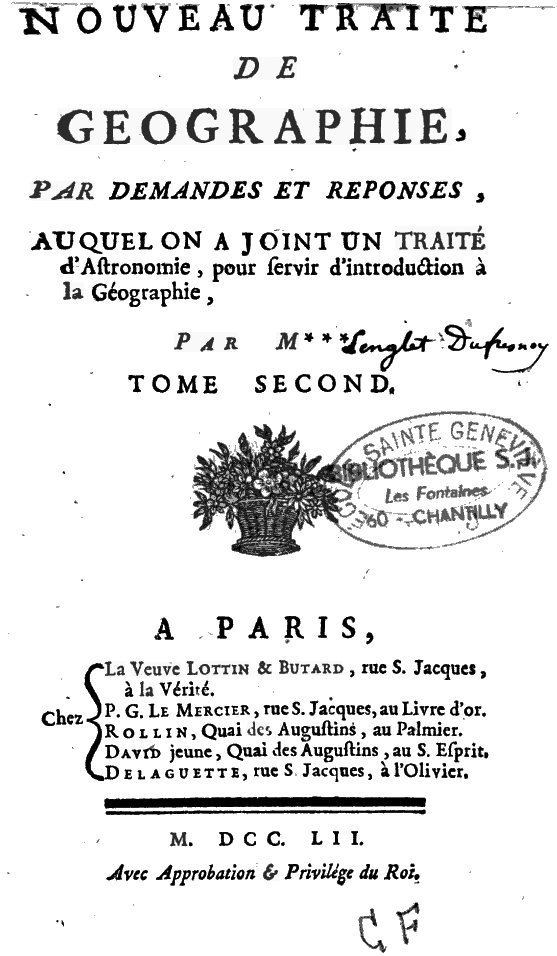
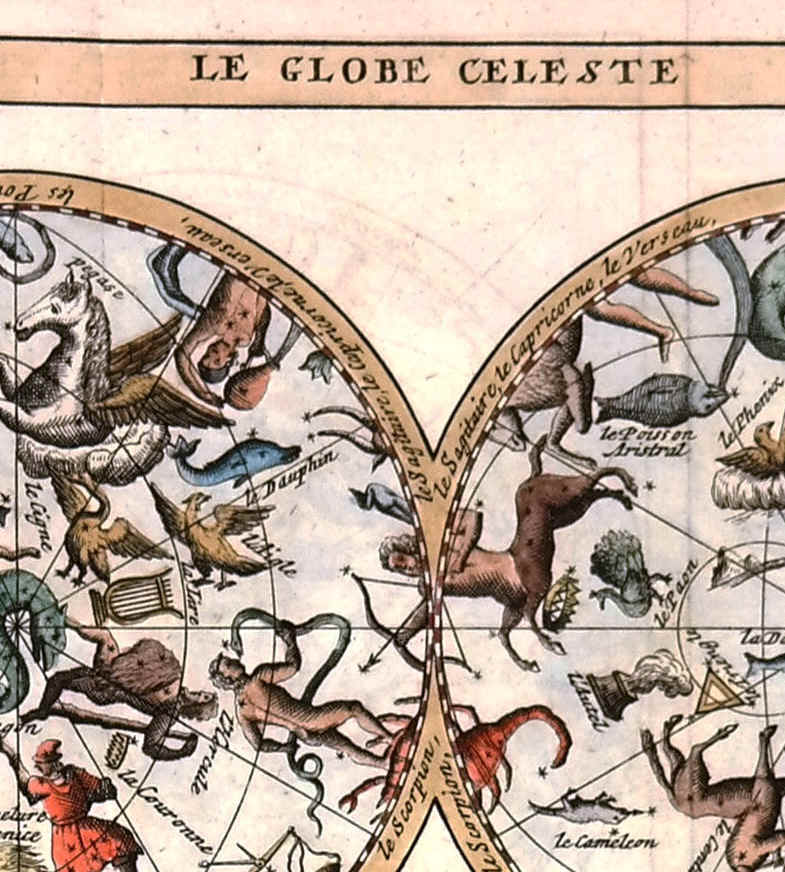
http://www.atlascoelestis.com/De%20Lisle%201752.htm
di FELICE STOPPA
OTTOBRE 2020
